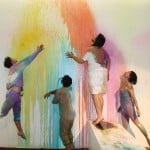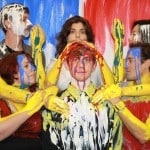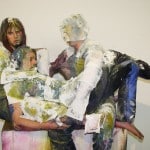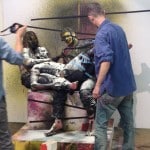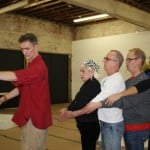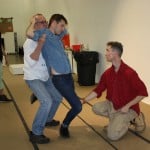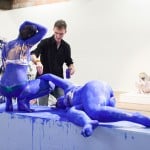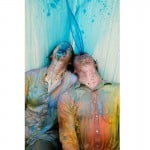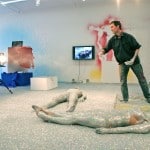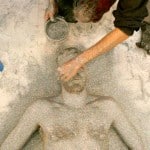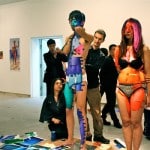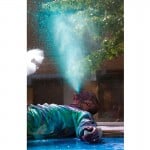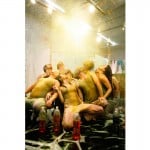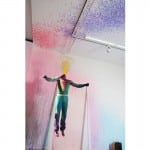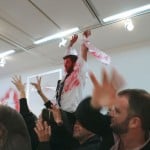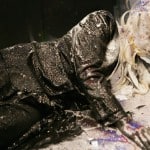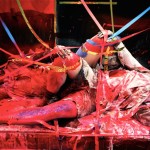- Oliver Herring, Areas for Action, Houston (Day 1: Color Spit Quartet), 2015
- Oliver Herring, Areas for Action, Houston (Day 2: Mondrian Miek), 2015
- Oliver Herring, Areas for Action, Houston (Day 3: Narrative) 2015
- Oliver Herring, Areas for Action, Houston (Day 4: Choreography) 2015
- Oliver Herring, Areas for Action, Houston (Day 4: Choreography) 2015
- Oliver Herring, Areas for Action, Houston (Day 5: Photo Cut Out), 2015
- Oliver Herring, Areas for Action, Houston (Day 7: Red, White, and Blue), 2015
Based in New York, German-born artist Oliver Herring is known internationally for his use of experimental techniques as a means to better understand human nature, individual behavior, and interpersonal dynamics. His work has taken a variety of forms, but since 1998 has focused primarily on brief yet intensive collaborative encounters with volunteer participants. Herring directs and documents these open-ended performances, usually involving a series of actions, which take place in different environments–including gallery or museum spaces, private homes, municipal buildings, and educational facilities—and feature groups of strangers interacting with each another. The resulting stop motion videos and photographs that Herring creates not only record these impromptu activities, but reveal the poignancy implicit in humanity when strangers expose their vulnerabilities and embrace trust.
For DiverseWorks, Herring will present his ongoing project Areas for Action, an accumulative exhibition consisting of daily performances, improvisatory sculptures, and real-time collaborative artworks created on-site with different groups of volunteers over several weeks. Gallery visitors and members of the general public are invited to participate or simply observe. Areas for Action takes its title from Herring’s utilization of the gallery space, which is divided into defined areas for specific interventions and actions. Each day a new group will join Herring in one of these areas to realize a wide range of works, whose creation will be recorded via photographs and video. These works will be exhibited concurrently, serving as an expanding visual archive of the project and highlighting its unfolding physical and thematic threads. Gradually the layers of documentation and traces of past performances will become an artwork itself, an immersive environment marked by intense visual activity, color, and materiality. Neither wholly object or performance-based, Herring‘s work seeks to remove boundaries between things and the actions people perform to make them; by extension, Herring also redefines the roles of artist and audience, often becoming an observer of others performing in situations that he designs but can never wholly control. The artmaking process becomes a site of vulnerability and risk-taking, a social experiment, and an open laboratory for innovative modes of representation.

